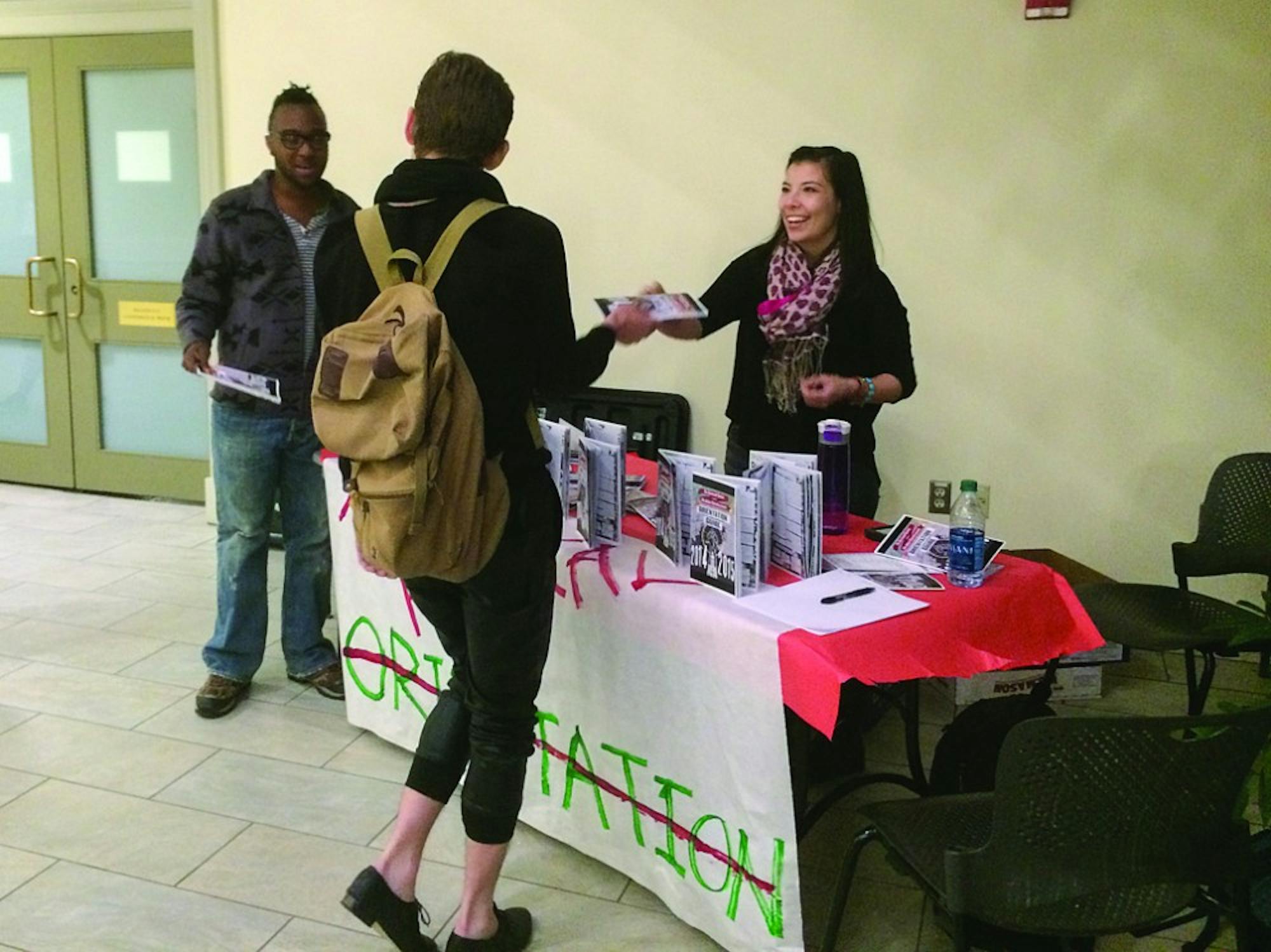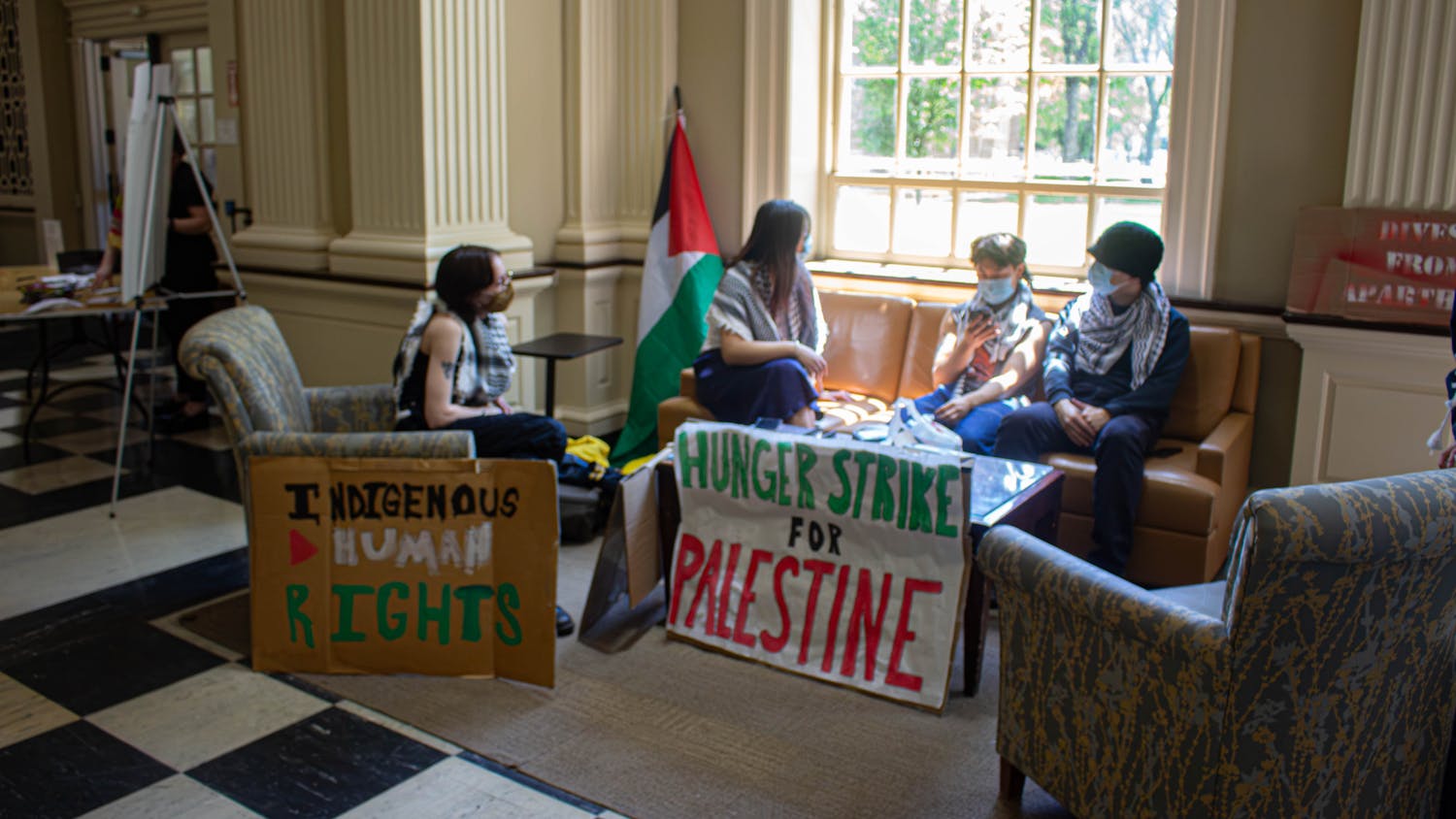Members of The Dartmouth Radical and the Action Collective released a “Disorientation Guide” late last week, distributing copies across campus newsstands and to passers-by in the Class of 1953 Commons. The 43-page booklet, marked with an image of Baker Tower inside a raised fist, contains information on course selection, social life and cultural appropriation, among other topics.
The compilation process began in July, said Oscar Cornejo ’17, who co-manages the Action Collective’s email list. The guide’s creators invited members of the Collective to submit essays, articles and other pieces of writing for inclusion in the publication.
“We believe that there is a need for an orientation guide that provides our truths, and prepares underclassmen for a Dartmouth that we ourselves were unprepared to face,” the authors’ note states.
Managing editors Melissa Padilla ’16 and Guillermo Rojas Hernandez ’13 declined to comment.
While the guide is aimed toward freshmen, Cornejo said anyone could benefit from reading it.
“Sometimes upperclassmen feel like they know the campus and the student body, so the guide really gives the campus through a different lens,” Cornejo said, “which I feel like upperclassmen should look into rather than seeing it through their normative daily lives.”
Creators received $1,500 in funding through The Dartmouth Radical, a member group of the Council on Student Organizations, to cover publication costs, Cornejo said. He estimated that the creators printed 1,500 copies, or enough to fill eight cardboard boxes. So far, Action Collective members have distributed five boxes of pamphlets.
Student members of the Action Collective gained campus and nationwide attention this February, with the publication of the “Freedom Budget,” a list of more than 70 demands related to diversity and inclusion, including proposals that the College increase enrollment of black, Latino and Latina and Native American students to at least 10 percent each, make a multimillion dollar commitment to increasing the racial diversity of faculty and staff and provide pro-bono legal assistance and financial assistance to undocumented students.
In April, students involved with the “Freedom Budget” staged a two-day sit-in of College President Phil Hanlon’s office, demanding a point-by-point response to their document. The protestors agreed to leave Parkhurst Hall only after signing an agreement with former Dean of the College Charlotte Johnson that stated the administration would conduct a campus climate survey and hold meetings with the protestors, who would not face disciplinary action beyond “low-level judicial review.”
Students who attended the meetings that spring said that while they were sometimes productive, at times students were frustrated with administrators’ lack of accountability.
The Dartmouth Radical, which bills itself as Dartmouth’s only progressive newspaper, began publishing in fall 2012.
The Action Collective has no set structure or leader, but rather comprises a set of interested students who communicate over email, Cornejo said.
Cornejo said that the guide is a way for the Collective to put its ideas “down on paper.”
“I think everything we do is outreach,” he said.
Twelve freshmen interviewed said they paid little attention to the guide when they picked it up, though some said it contained some useful information.
Garrison Roe ’18 said that he found the guide helpful, but he disliked that it implied that freshmen were ignorant and “attacked” fraternities and other groups in a one-sided manner.
“There are many good tips to help people be more considerate of the groups represented around them,” Roe wrote in an email.
The “Disorientation Guide” includes student reflections on their activism at the College, including the Real Talk Dimensions protest in spring 2013. Also highlighted are “life-changing” classes, favorite professors, job recommendations and advice on being an ally to different communities.
One lengthy piece in the guide outlined a recent history of activism at the College, spotlighting the Occupy Dartmouth encampment in 2011, the Martin Luther King Jr. Day protest this January and the two-day sit-in Hanlon’s office.
The guide cites inspiration from similar publications released at colleges around the country, including Columbia University, New York University, Tufts University and the University of California at Santa Cruz.
Adam Odsess-Rubin, a 2014 graduate of UC Santa Cruz and editor of the school’s 2011 disorientation guide, said that the publications are created at schools across the country, though their form and content varies by campus and year. The UC Santa Cruz edition, financially supported by the university, included essays about budget cuts, local grassroots activism and the university’s history.
“We wanted people to think critically about what was happening at the school,” he said, adding that he believes the publication had a lasting impact.
Like the Dartmouth Radical and Action Collective’s guide, other universities’ publications focus on diversity and safe social spaces. Dartmouth’s publication also highlights undocumented student life and school-specific issues like Greek life and last spring’s “Freedom Budget” protests.
Writers Noah Cramer ’16, Yomalis Rosario ’15 and Tramon McZeal ’16 declined to comment, with Cramer citing an agreement among collaborators not to speak to The Dartmouth. Other contributors could not be reached by press time.




